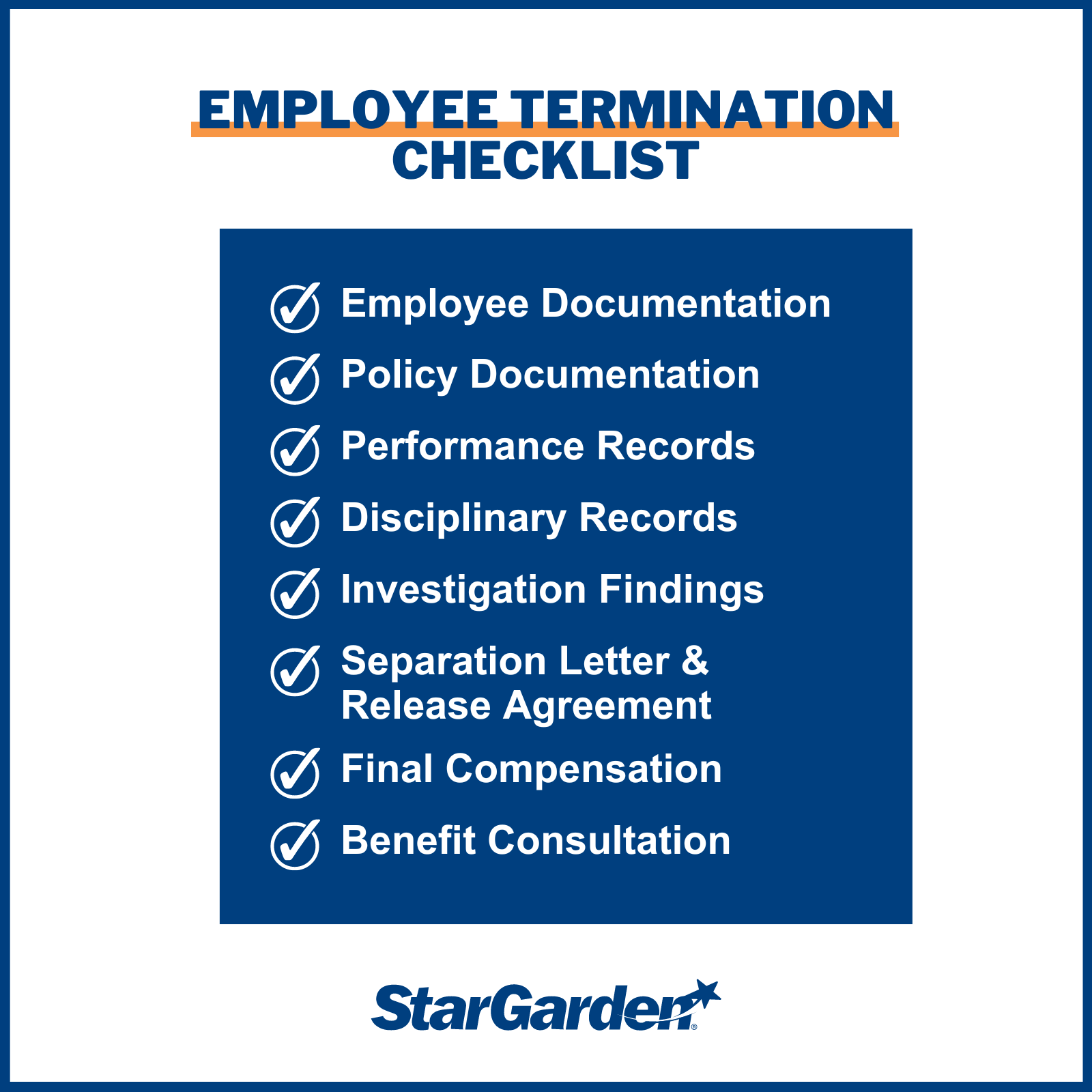Employee Termination Challenges in a Municipal Environment
Summary: Terminating an employee is a complex process that requires careful planning and execution to avoid legal and other risks. This blog post provides a quick 8-point checklist for employee termination. It discusses municipalities' unique challenges in this process, including job protectionism by public sector unions and public opinion.

Let's face it: Municipalities face unique issues and challenges when terminating employees compared to their counterparts in the private sector. Firing an employee the "right" way is imperative.
Read on to get our quick 8-point checklist for employee termination and download our complimentary ebook, "Employee Termination," to ease the termination process and reduce risk.
Common Issues Faced by Municipalities When Terminating Employees
Terminating a municipal employee can be complex, fraught with bad feelings on everyone's part, and the risk of potential litigation. And the court of public opinion is real.
Here are some common issues faced by municipalities when having to terminate employees:
1. Aggressive job protectionism by public sector unions2. Sometimes, difficult-to-prove incompetence within a government job
3. Risk mitigation and public opinion when terminating an employee (Damned if you do; damned if you don't.)
4. Less focus (compared to the private sector) on downsizing during economic downturns
Unfortunately, whether due to performance, behavior issues, or general economic downturns, letting an employee go is a necessary part of our society. Separating employees may have grievances about perceived unfair treatment, discrimination, retaliation, and wage and hour complaints. You can make the termination process more accessible by following the general guidelines.
Timing is Everything
How you terminate someone is often just as important as why you let them go. Treating your employees like criminals – before or after their termination – fosters resentment and hostility and increases the risk that you will face a lawsuit.
Plan appropriately for a termination. Have your paperwork prepared, and meet with the employee privately. Don't schedule the meeting for first thing in the morning or last thing on Friday afternoon. The employee's direct supervisor should inform the employee of the termination, and a member of the company's management, HR, or legal team should also be present. If security is necessary, have them available but not present in the termination meeting. Be direct about the reasons for termination, but don't expound or allow yourself to be drawn into an argument or emotional discussion. Have knowledgeable HR representatives available to discuss the employee's insurance issues, retirement accounts, and options for continuing medical coverage (i.e., COBRA in the U.S.).
Whenever possible, it's best to let an employee know they are terminated before canceling access to company systems (such as buildings, computers, network systems, etc.) or publicizing the news: No one wants to find out they've been terminated on Twitter.
Document, document, document!
Whether prescribed by law, contract, agreement, or company policy, you should set out the terms of your discipline and termination policies in writing (online and/or in a written handbook). Ensure your employees receive and acknowledge receipt of the policy, and update this regularly. (You can do this easily with an online, automated workflow.)
When putting together a termination package, include all relevant documentation and information.
Below is our comprehensive 8-point checklist essential for reference when handling an employee termination:
- Employee Documentation: Ensure you have the employee's application for employment and other pertinent documentations such as job postings, descriptions, and interview records to establish the context of their hiring and subsequent employment.
- Policy Documentation: Make your written code of conduct, disciplinary policies, and termination procedures readily available to ensure that the termination process is carried out according to company policies and legal requirements.
- Performance Records: Gather performance appraisals, evaluations, and self-assessments to provide a comprehensive overview of the employee's performance history. If necessary, this information can serve as justification for the termination decision.
- Disciplinary Records: Compile records of any previous disciplinary counselling or formal disciplinary actions taken against the employee to demonstrate a pattern of behaviour or performance issues leading to the termination.
- Investigation Findings: Document the findings of any internal investigations related to the termination to support the decision and ensure transparency in the process.
- Separation Letter and Release Agreement: Prepare a separation letter outlining the reasons for termination and, if necessary, a release agreement to mitigate potential legal risks for both parties. Read more on our blog post, "How to Use Releases When Terminating Employees".
- Final Compensation: Provide an itemized breakdown of the employee's final compensation, including their last paycheck, bonuses, vacation payouts, commissions, severance, and any other incentives owed to them.
- Benefit Continuation: Inform the employee about the continuation or transfer of benefits such as insurance coverage, pensions, and retirement accounts to facilitate a smooth transition out of the company.

Terminating an employee is a complex process that requires careful planning and execution to avoid legal and reputational risks. Municipalities face unique challenges regarding employee termination, and it is essential to follow a thorough checklist and document everything to reduce the risk of litigation. Planning appropriately, being direct, and having knowledgeable HR representatives available can ease the termination process and reduce the negative impact on everyone involved. Treating employees with respect and empathy is crucial, even when terminating them.
Want a more detailed review of Employee Termination? Download our complimentary eBook with helpful information about easing the termination process and reducing risk.


